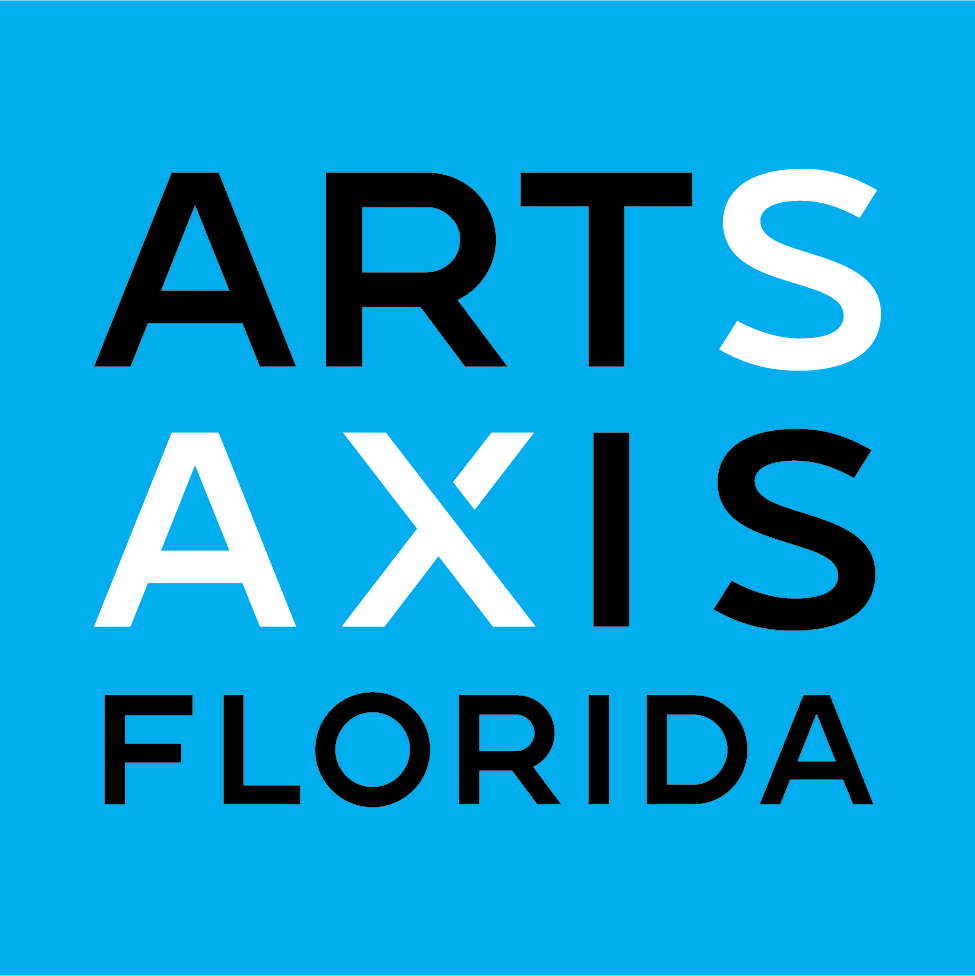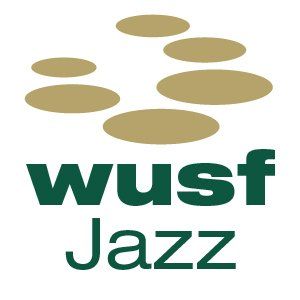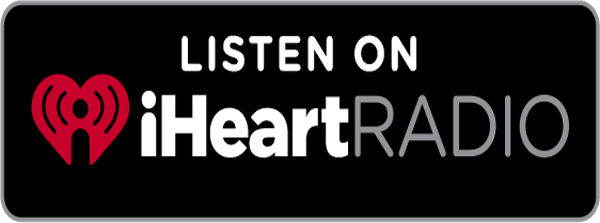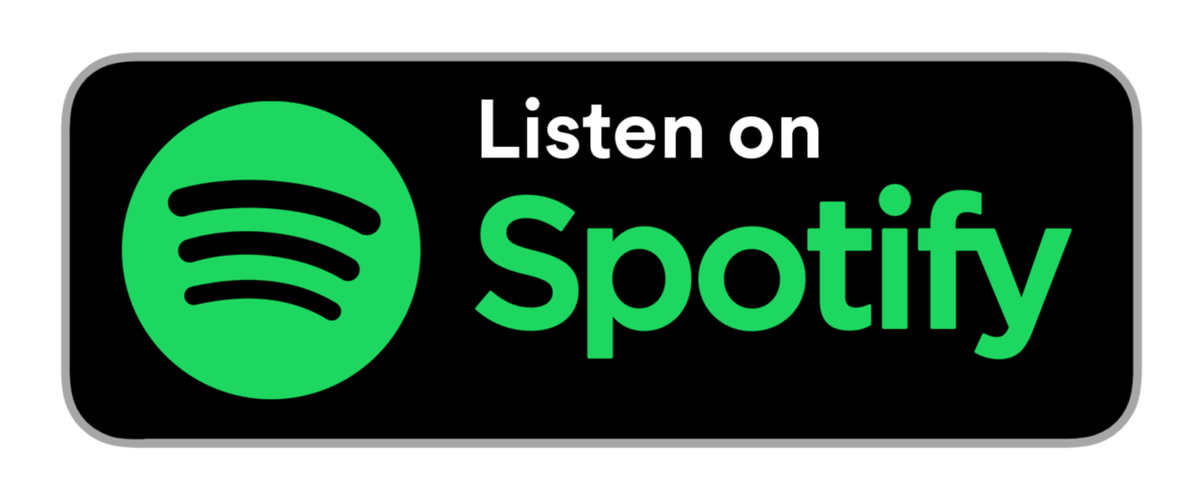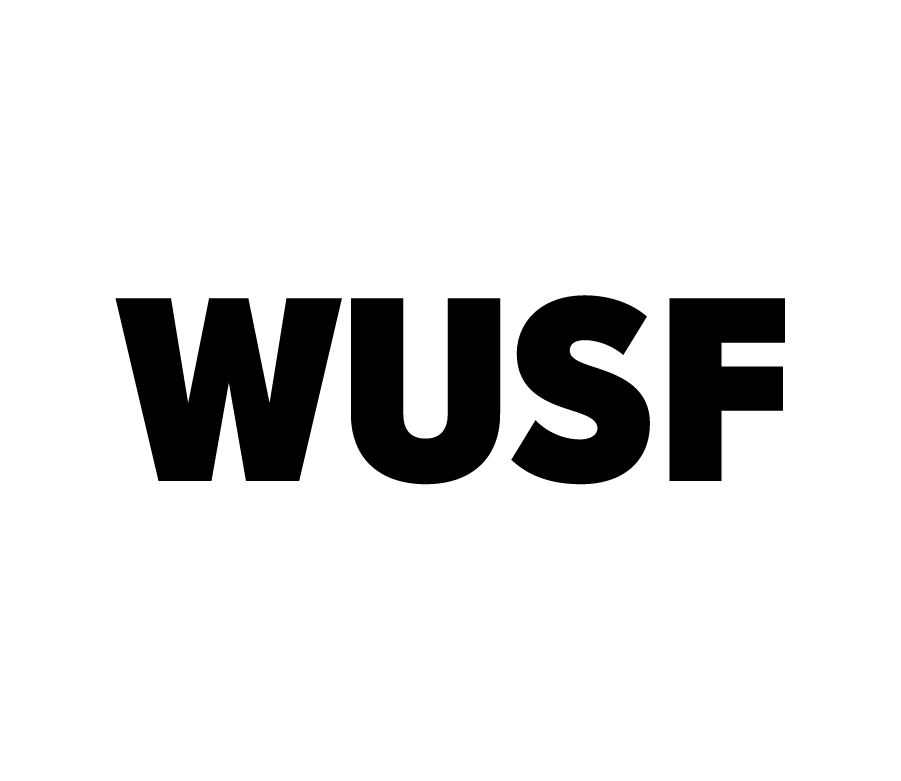00:00:04:16 - 00:00:35:15
BRIANA JACKSON
Welcome to the Arts Axis Florida podcast. I'm your host, Brianna Jackson. Arts Axis Florida is a comprehensive initiative designed to shine a spotlight on your neighborhood's diverse arts organizations. Each episode will highlight their programs and more importantly, amplify the voices of the people they impact conversations community and connections. That is a value in engaging with your local arts organizations.
00:00:36:09 - 00:00:37:21
BRIANA JACKSON
Arts Axis equals Arts Access.
00:00:37:21 - 00:01:00:16
SPONSOR
Support for Arts Axis Florida comes from the Community Foundation, Tampa Bay, championing philanthropy, encouraging and connecting givers to bring lasting good investing in education and economic mobility. Learn more at C F Tampa Bay dot org.
00:01:08:18 - 00:01:33:17
BRIANA JACKSON
In this episode of the Arts Axis Florida podcast, we speak with three organizations that strive to build communal and educational values through performances programing and diversifying artistry. West Coast Black Theater Troupe, Polk Museum of Art, and the Florida Museum of Photographic Arts. First, we're joined with Nate Jacob and Julie Leach from the West Coast Black Theater Troupe.
00:01:33:17 - 00:02:08:16
BRIANA JACKSON
Through theatrical performances this organization spotlights the important stories of Black Lives while educating the public on the influences African-Americans have had in the United States. Nate and Julie also give us a glimpse into what we can expect in their upcoming season. Next, we speak with Dr. Alexander Rich, the executive director and chief curator of the Polk Museum of Art. This organization emphasizes the importance of arts education with K-through-12 programs allowing both children and young adults to explore the endless possibilities of art.
00:02:09:06 - 00:02:33:13
BRIANA JACKSON
The museum even offers hands on experience for those interested in starting a career in museum work. Finally, we talk with Dr. Zora Carrier, the executive director of the Florida Museum of Photographic Arts. Since the pandemic, the museum has tailored its mission towards helping the community through weekly healing activities and new art installations that focus on a person's well-being and self-reflection.
00:02:42:09 - 00:02:47:11
BRIANA JACKSON
All right. Hi, Nate and Julie. Welcome to the Arts Axis Florida podcast. How are you both today?
00:02:48:13 - 00:02:50:05
NATE JACOB
Excellent. Thank you.
00:02:51:08 - 00:02:52:07
JULIE LEACH
I'm doing great.
00:02:52:12 - 00:03:00:11
BRIANA JACKSON
So let's jump right into it. Give us a bit of insight into your roles at the West Coast Black Theater Troupe. And Julie, we'll start with you.
00:03:01:15 - 00:03:18:16
JULIE LEACH
Well, I'm the executive director here, which is the business side of the equation. So a lot of budgeting and development advancement of work and helping produce the creative decisions season that Nate Nate does the planning for.
00:03:18:21 - 00:03:56:22
NATE JACOB
I direct the company, West Coast Black Theater Troupe, along with Julie. My title here is Founding Artistic director of the founder of the theater company. We're 21 years old now. And I planned the artistic program here at the theater and worked with Julie to make sure we present the best quality, professional, artistic work and product we can and work and plan some of the other artistic programs.
00:03:56:22 - 00:04:27:15
NATE JACOB
We are just bringing on an education director to help with some of the educational artistic planning. But that is my job to just oversee the artistic program of the theater company, which means hiring talent. The artists are being a part of hiring the man, along with our program manager production manager. So the whole artistic world is what I kind of am a steward of here.
00:04:27:15 - 00:04:28:03
DELETE OUT
00:04:28:16 - 00:04:32:22
BRIANA JACKSON
Wonderful and congratulations for reaching 21 years. That's a success.
00:04:33:12 - 00:04:34:03
NATE JACOB
Thank you.
00:04:35:14 - 00:04:42:01
JULIE LEACH
It wasn't an easy journey, however the last 11, 12 years have been a lot better than the first.
00:04:44:00 - 00:04:45:01
NATE JACOB
Amen to that.
00:04:47:12 - 00:04:59:10
BRIANA JACKSON
And, Julie, bring this one to you. So as your organization begins to open back up. What are some things our audience can look forward to? In the coming months for the West Coast Black Theater Troupe?
00:05:00:20 - 00:05:27:00
JULIE LEACH
Well, we're hoping to have a complete season starting in October. Our first show is Eubie Music of Eubie Blake, a Broadway show originally. And then, you know, we're blessed here. At West Coast Black Theater Troupe that our artistic director, Mr. Jacobs, creates a lot of our shows. So we have a lot of original material. We do every year.
00:05:27:15 - 00:05:48:17
JULIE LEACH
But this year in particular, we have several of his shows. So the next show we're doing is a holiday show called Joyful Joyful. In the past, we've rotated between Black Nativity and Motown Christmas. And one of those is Nate Show too, the Motown Christmas. But this year he's creating a new one. He can tell you some more about that later.
00:05:49:02 - 00:06:11:11
JULIE LEACH
And then we have Ruby, which is another show that he's creating actually with his brothers, is for the musical drama You can tell you about some of that and the development that later in the conversation, if you want. Now, we're doing something called Broadway and Black, which is a review of the greatest black musicals from Broadway, Dreamgirls, and with all kinds of fun stuff in that.
00:06:11:11 - 00:06:30:18
JULIE LEACH
And then we're wrapping up the season with a couple of One-Act shows by some of our younger aspiring artists. One of them is more of a developed artist. But she workshopped the show here, created it's kind of our Young Playwrights series we're putting that on this year as part of our mainstage season. We're so excited about the two new shows.
00:06:31:08 - 00:06:53:02
JULIE LEACH
They'll be in each one act together, like going to be a pair and show each day when you go. So that's kind of different exciting for us. We have lots of education programs. You're planning for the year to to reach schoolchildren and hiring a new education director. That's going to help us accomplish that. So a lot going on.
00:06:54:02 - 00:07:05:21
BRIANA JACKSON
And Nate, this year's artistic lineup is really impressive. I checked it out. Tell us more about the process for choosing what plays will be showcased, because I'm sure it can be tough
00:07:05:21 - 00:07:46:21
NATE JACOB
Yeah. Most seasons I come up with a theme, kind of an umbrella which all of our artistic offerings fall under. This season, of course, I think is very fitting and still we rise. Oh, but as from, you know, a universal perspective of definitely endangered indigenous people at cost, African-Americans who have you kind of, you know, have been challenged quite a bit in this country.
00:07:47:09 - 00:08:33:09
NATE JACOB
And through all the obstacles and challenges and still we rise. So we are celebrating that resilience spirit of our people and telling some of the stories, some of the history. So opening with the father of black Broadway, Eubie Blake, who partnered with Noble's sister to produce the first professional all-Black, all composed and created Broadway musical Shuffle Along to celebrate him as far as breaking open the door for African-Americans to celebrate their gifts and talents in the Great White Way, which before Shuffle Along, there was no people of color on that platform.
00:08:33:21 - 00:09:04:07
NATE JACOB
And then to do Joyful, Joyful was just a celebration of life, like we were saying just a minute ago, dealing with holiday music. Barriers arrangements that are high spirited and and just just wanting to be something to evoke the spirit of celebration for the holidays is a nonstop concert that sets off like a rocket until it lands.
00:09:06:05 - 00:09:36:21
NATE JACOB
So and then I kind of try to put some other things to talk about that kind of resilience In Ruby, it deals with a true story that happened in Florida. Here, a black woman, Ruby McCall, and she was married they were the most prestigious and wealthy black couple in Live Oak in the 1950s, almost unheard of, the kind of wealth that they had being African-Americans.
00:09:37:06 - 00:10:06:10
NATE JACOB
And they partner with a very affluent white gentleman and his family. And then all of a sudden things took a turn where the white gentleman is killed, is shot by the black woman And then the story begins to unfold to tell a story of intrigue and drama and mystery. That is to be honest with you, is still a mystery and Like Oak. Florida to today [inaudible].
00:10:06:17 - 00:10:29:20
NATE JACOB
So we developed a new musical to tell our version of the story. Zora Neale Hurston was with the Pittsburgh Chronicles at the time, and she was sent to liable to to kind of dictate the story from the black woman's perspective because, you know, back in the 1950s, there was only one perspective that came to the light. Right. Well, very interesting and very excited about.
00:10:29:20 - 00:11:01:12
NATE JACOB
Finally, we had to cancel it twice because of the pandemic things like that. But glad to bring it to the stage. So every one of our shows fall under that umbrella. And then the two new pieces, the one acts that share an evening together during our season, one is celebrating Nell Carter who was, you know, a nontraditional black woman who most people thought would never make it on Broadway in the 1970s.
00:11:01:21 - 00:11:26:08
NATE JACOB
And because of her tenacity to take nothing less than what she wanted out of life. She dominated Broadway won a Tony and then went on from there to be a hit on television with her own show, Give Me A Break. So the same resilience we're talking about and then we second show of that evening is Float Like A Butterfly, which of course is the phenomenal Muhammad Ali.
00:11:27:00 - 00:11:49:13
NATE JACOB
And we kind of deal with his his use of his platform to be an activist for change kind of on the heels of Dr. Martin Luther King because he was really out on the platform and Dr. King was out there with the civil rights movement and celebrates his activism for civil rights and shares his views, which is scary.
00:11:49:15 - 00:12:19:07
NATE JACOB
When we were developing the piece in the studio, it was so scary that all of this stuff is so prevalent today. And although there have been changes in America, wow, we still have a long way to go. And we were just sitting in the studio just building the show, thinking even the young we had two young musicians who were debuting their music in this show, and they would stop and go like, oh, my God, you know what?
00:12:19:07 - 00:12:27:13
NATE JACOB
This is just like what's happened in the day? We just think the Black Lives Matter movement. And I was like, yeah, yeah, yeah. Sad to say, but true.
00:12:27:20 - 00:12:33:02
BRIANA JACKSON
So, Nate, how can these choices and performances speak to the issues facing black people today?
00:12:34:09 - 00:13:07:14
NATE JACOB
First of all, awareness is everything, you know, when people don't know, they just don't know but to bring awareness is everything. And the theater is the edifice that houses that catharsis that happens between live performance and human beings. When in our country, you know, a lot of people don't go to church no more. They will come to a theater because in their heads is more exciting and all of that.
00:13:07:21 - 00:14:03:16
NATE JACOB
So we get an opportunity to get up on that platform and really get into the hearts and minds and spirit, unlike very few platforms I ever to do this, this day and time, you know, to get those kids out of their cell phone and sometimes adults out of their cell phones to sit in the dark for 2 hours and listen, really listen and see our lives played out before us to see other people's contributions played out before us, which tells us things are possible, miracles can happen, you can overcome, you can achieve, and there is absolutely no giving up on whatever is true for you.
00:14:04:11 - 00:14:47:15
NATE JACOB
You sing in the dark and that stuff is rehearsed in your mind, rehearsed in your heart. So it is a change mechanism. I feel as a producer of the theater, even for the actors on stage, I wrote this little piece called Technicolor Musical that is a cry for more diversity, equity, and inclusion for the world. And so these young artists between 11 and up to 19 years old, they had a chance to speak their voices and rehearse that message in their heads.
00:14:47:15 - 00:15:09:21
NATE JACOB
I told them, I said, this cast in this theater is a community so we're going to go before the audiences and tell them that they need to love and be more understanding and be more equitable toward each other. Are we doing that in the cast with your colleagues at the theater, how you deal at lunch time with the kids that you're sitting around in your lunch with?
00:15:10:14 - 00:15:44:09
NATE JACOB
That stuff is rehearsed. Theater is just a playback of our lives because we are different in some ways, mostly culturally, because we all kind of want the same things. The, you know, the the essence of a human being. We all are alike. We all dream, we all love, we all hope, we all cry at times. And but the thing that makes us a little different is the culture which happens with the environments we are we grew up in.
00:15:45:02 - 00:16:20:20
NATE JACOB
And so to never see your culture was celebrated, which is the essential reason why there needs to be a West Coast Black Theater troupe is sometimes the ABC's absence of it. Is possible for me. So black children sing a black actor on stage talking about their black story says to them wow. So I'm important to and my story is worth celebrating talking about it bringing awareness to just because they are represented on that platform.
00:16:21:18 - 00:16:32:03
BRIANA JACKSON
Not only are you providing educational performances, but you're also educating the public about the impact that black community members have had within the theater, setting.
00:16:33:03 - 00:16:53:17
NATE JACOB
These subject matters that we are presenting and offering this season does just that, you know, continue to reiterate the power of everyone's contribution. Having a platform where we have the freedom to do that here at WAPT is just invigorating what.
00:16:53:17 - 00:17:18:12
JULIE LEACH
A special community Sarasota is because they do support the arts and are passionate about this theater. We receive so much community support, and it's exciting to see African-American retirees coming here and coming to the theater and saying, Wow, this is one of the main reasons I chose Sarasota to live in because I knew I could come to black theater when I got down here.
00:17:19:04 - 00:17:45:01
JULIE LEACH
And so we really see a lot of widespread community support for this organization, especially our education programs are all funded through donors, and we provide a five week summer camp to those students for free through donor support. So we feel blessed to be here in Sarasota. We're arts community, and we appreciate being on Art Axis Florida very much so the platform.
00:17:45:01 - 00:17:45:19
JULIE LEACH
So thank you.
00:17:46:08 - 00:17:58:19
BRIANA JACKSON
It's a it's a beautiful partnership and it just goes to show the success you've had. And I'll say it again. 21 years, that is such an amazing success. And Nate and Julie I want to thank you so much.
00:17:59:02 - 00:18:02:10
NATE JACOB
Thank you. Have a great day.
00:18:10:21 - 00:18:14:02
DELETE OUT
00:18:15:20 - 00:18:16:00
DELETE OUT
00:18:17:12 - 00:18:43:13
BRIANA JACKSON
Not only are there productions entertaining, but the West Coast Black Theater Troupe has created a safe space that elevates the voices of black lives. While giving African-Americans an opportunity to indulge in the creative realm of theater. For more information on the West Coast Black Theater Troupe, please visit our shownotes
00:18:43:13 - 00:18:47:01
BRIANA JACKSON
Hi, Alex. We're so happy to have you on the podcast today. How are you?
00:18:47:05 - 00:18:50:11
ALEXANDER RICH
I'm doing really well. I'm so glad to be here. Thanks for having me.
00:18:50:21 - 00:18:55:07
BRIANA JACKSON
We're excited to have you. What is something you want our listeners to know about this museum?
00:18:55:21 - 00:19:25:12
ALEXANDER RICH
Well, I think what's really important to know is that we are a long established community museum that has actually been in Lakeland and has been Polk County, Florida's Community Museum, since 1966. But since 2017 we affiliated with Florida Southern College, my employer. And at that point, we transitioned the museum to becoming an academic community museum. Now, of course, every museum was always educational and academic in some way.
00:19:25:17 - 00:19:48:01
ALEXANDER RICH
But with the affiliation and with my coming over initially as curator and now as executive director and chief curator of the museum, we really sought to raise the caliber of everything that we did educationally exhibition wise, etc.. And so we really do pride ourselves on being a world class museum that probably too few people have heard about. And we are Smithsonian affiliate.
00:19:48:01 - 00:19:54:18
ALEXANDER RICH
So that's a great kind of feather in our cap. And we are the only Smithsonian affiliate FINE Art Museum in central Florida.
00:19:55:12 - 00:20:06:04
BRIANA JACKSON
That is certainly something to be proud of. And tell us more about this partnership with the Florida Southern College. How has that transformed this museum into more of an academic museum?
00:20:06:14 - 00:20:28:09
ALEXANDER RICH
Well, you know, Florida Southern College is about a block south of the museum, so it seemed like an inevitability. And well, before my time at Florida Southern, it seems like it should have been some sort of a more complete connection between the two institutions. I actually came down from New York City to just be the head of the art history program at Florida Southern back in 2014.
00:20:28:09 - 00:20:47:12
ALEXANDER RICH
And never did I imagined that we would create this affiliation between the local museum. And then that would become the essential part of my job. And actually developing a whole new major program of art history and museum studies at the museum where my department that I'm chair of as the head of the art history department, is now housed at the museum.
00:20:47:12 - 00:21:10:04
ALEXANDER RICH
We've created this great opportunity both for Florida Southern College students and for student learners of all ages, and that includes everyone in our community from from the youngest child through to the oldest learner, willing to spend time and learn about the world museums to really have a great way to find out more about art, art, history, and also the inner workings of museums.
00:21:10:04 - 00:21:25:02
ALEXANDER RICH
And I believe everyone is kind of fascinated about how museums work. I kind of joke that a lot of people dream of being astronauts, but I think a lot of people also are fascinated by, hey, how do how do you get all those objects up on the walls and how do you build those dinosaurs, etc. So I think everyone's always intrigued by how museums work.
00:21:25:09 - 00:21:51:21
ALEXANDER RICH
And I think the affiliation with Florida Southern really was the catalyst to make our museum more and more outstanding and also bring in great master work art shows. So that's been the most obvious difference since we affiliate in 2017. Is that just what we've been showing the public and the types of shows and exhibitions we've been able to present have, as far as I know and as far as the feedback that I've received have outweighed anything that we've done in the decades before.
00:21:51:22 - 00:21:55:07
BRIANA JACKSON
I've read that this is actually a free service to your community.
00:21:55:12 - 00:22:22:04
ALEXANDER RICH
Absolutely. We pride ourselves on being a free admission museum. We never want seeing art or enjoying a museum or having that experience of seeing art in a museum to be any obstacle to anyone based on costs. So we are open to the public. We are free every day of the week that we are open, and that is due to the generosity of our strategic partners and to our members.
00:22:22:04 - 00:22:48:14
ALEXANDER RICH
So we have a great body of members who really do help to underwrite the opportunity for others to be able to come to the museum. And we like to think of it just like nobody would ever doubt going to a library and having that be free and accessible to anyone who wants to read a book. We believe just as strongly and maybe even more strongly that visual culture and visual literacy really should be on the cutting edge of what everyone is able to access and everyone is able to enjoy.
00:22:48:14 - 00:22:51:21
ALEXANDER RICH
So we are free admission and we are very, very, very proud of that.
00:22:52:02 - 00:22:59:13
BRIANA JACKSON
I see the Museum of also offers a variety of programs for children and young adults. Tell us more about that.
00:23:00:01 - 00:23:25:08
ALEXANDER RICH
Yeah, we are a, you know, full blown museum in every way you could imagine. Of course, you know, for most people, exhibitions are the most obvious and kind of front line element of our education and our educational programing. But we do really cater to learners, as I said, of all ages. And some of our great pride and joy as well is our K-through-12 programing.
00:23:25:14 - 00:23:56:02
ALEXANDER RICH
So we run four sets of camps and class programs during the year, including really our summer camp programs. Which are so well-established and so popular. So we just finished those up a couple of weeks ago. We run fall classes in spring classes and spring break camp, and those are popular outlets for students to spend a week or two weeks or even over the summer, six to eight weeks, learning about different art of different media and working with our local educators.
00:23:56:06 - 00:24:16:15
ALEXANDER RICH
So those are real strong points of the museum. And then, of course, we have adults coming through for our classes as well. Our members do get free access to certain classes. I will actually be offering a class in September that is a fundraiser for the museum. I'll be teaching contemporary art history, and this will actually be my third iteration of that as a fundraiser for the museum.
00:24:16:20 - 00:24:35:15
ALEXANDER RICH
So we really do try to offer, in addition to our exhibition programs, we really do try to offer classes and continue education both for adults and for students when they are outside of their regular class hours. It really is something that we pride ourselves on. And again, we are an academic institution, and I lead the museum as a professor first and foremost.
00:24:35:15 - 00:24:44:21
ALEXANDER RICH
I may be the director and the chief curator, but I still see everything through the lens of being a professor and a teacher. And I think that's really important. And I hope hopefully that's important also to the success of the museum.
00:24:45:02 - 00:24:53:03
BRIANA JACKSON
Not only are you offering educational programs, but you also encourage those who attend to learn about careers in the arts.
00:24:53:16 - 00:25:15:17
ALEXANDER RICH
Absolutely. And most obviously is my department at Florida Southern. So as I said, we are actually we're in our second year of a brand new major we've had art history as a major at Florida Southern since forever. But when we had the affiliation with the museum, we started, you know what, now we have our own nonprofit institution, dedicated to the study of art and the propagation of learning about art.
00:25:15:21 - 00:25:36:10
ALEXANDER RICH
So let's actually break off the major into its own department and into its own newly expanded major art history and museum study. So I'm the chair of the Department of Art History Museum Studies housed on the second floor of the museum. And so our students are a great example of giving pre-professional opportunities to learning about what it's like to work in a museum.
00:25:36:17 - 00:25:59:02
ALEXANDER RICH
Our first year students from the first days, they arrive on campus at Florida Southern and come to the museum. They have the chance to work with our curatorial team or our marketing team or our education team and find out what areas of the museum they might be interested in. In terms of pursuing careers. We also encourage high school students to come in and intern to help during our summer camps as well.
00:25:59:14 - 00:26:16:16
ALEXANDER RICH
I get great emails from students who are interested in our program, hoping they might be able to shadow even now in the years prior to applying ideally to Florida, Southern or to elsewhere to see what it would be like to have a career in non-profits or museums. And I also believe that a lot of adults are intrigued by it too.
00:26:16:16 - 00:26:32:08
ALEXANDER RICH
And we've often talked about the idea of how can we even give some sort of intense give insight for adult learners into what goes on behind the scenes at museums. And it is a really fascinating thing. I mean, I've been working in museums since I was 16 years old. As an intern at the Metropolitan Museum in New York City.
00:26:32:08 - 00:26:50:19
ALEXANDER RICH
So I know firsthand how cool it can be. When you are especially young, you get a glimpse into how museums run, and we really, really, really do pride ourselves on that as well, that we are not just learning and learning institution in terms of what we offer publicly, but also in terms of the actual jobs and the professions within that world too.
00:26:51:05 - 00:27:02:10
BRIANA JACKSON
As we continue to, as we all know, embrace this digital age that we're in. How has the museum been able to transmit art onto screen while still maintaining like an educational component?
00:27:02:21 - 00:27:27:07
ALEXANDER RICH
Yeah, it's a great question because I think a lot of us in the museum profession, along with people, all different professions, obviously were somewhat bewildered by the concept of how do we continue doing what we do as professionals and, you know, as educational institutions or media outlets, etc. in the time of a pandemic. And for many of us on the museum side, we said, Well, now what is an art museum without the art museum?
00:27:27:12 - 00:27:49:22
ALEXANDER RICH
Because we also pride ourselves very much on the idea of firsthand experience is looking at actual works of art. As I tell my students in my classroom, there's nothing quite like seeing an actual work of art as opposed to seeing a slide projected on a wall. Sometimes I have to show them slides, projection on walls, but I can't just teleport them to France and see great works of, say, impressionist art that we're looking at in class together.
00:27:50:05 - 00:28:19:13
ALEXANDER RICH
But so the question became, what does a museum look like if you can't do your programs or off your exhibitions in person? And what we realized quickly was that by starting to move our programing online, we started to do virtual programing, we started to do virtual lectures. We started to chat about the inner workings of museums, and we realized that there was a thirst and a desire in our broadening community to learn a little bit more about how museums function and a little bit more about behind the scenes of museums.
00:28:19:13 - 00:28:41:12
ALEXANDER RICH
And we found great success when we launched our virtual programing actually beginning in the first week of May of 20, 20, we had never, ever done anything virtual before. And then it became a weekly program for us actually. I mean, I joke to that in the same spot where I'm sitting right now, I became basically like a public access TV host, which is not anything I ever desired in my life.
00:28:41:12 - 00:29:06:04
ALEXANDER RICH
But every Thursday night at 6 p.m., I was leading some new talk or lecture with members of the community or giving on these crash courses on specific subjects. And we found that as opposed to being a detractor from what we did in-person virtual program actually opened up a broader community to us and gave people access to the arts and to museum instruction in ways they never could have done before.
00:29:06:04 - 00:29:26:08
ALEXANDER RICH
So at 6 p.m., we heard from people Hey, you know, this is a time I usually couldn't come to an event at the museum physically, but I can log on to my phone or I can log on to my computer right now. And while I'm making the kids dinner I can actually learn about the secret life of the Impressionists, or I can see all the weird, curious items you have stored away in the back of the museum.
00:29:26:14 - 00:29:57:00
ALEXANDER RICH
So we realize that there was a benefit to that. It's not quite the same as doing something in person. And I think people got tired, obviously, of staring at a screen over and over and over again. But it was a way for us to expand our community. And in the end, you know, over the course of a year, we had about 30,000 attendees of our virtual programs, which for us is really incredible when in a typical year we have about 140,000 in-person visitors when we're able to add 30,000 more who attended our virtual programs. That's a pretty good new proportion of our attendance.
00:29:57:10 - 00:30:00:06
BRIANA JACKSON
Do you plan on keeping this virtual experience going?
00:30:00:14 - 00:30:24:17
ALEXANDER RICH
We do. I have actually I have vowed that we will continue doing virtual programs from here on out because again, our community is not just the Polk County community, not just the Central Florida community. We want people to know that our programing is unique that we offer a unique experience, and we want anybody from, you know, who becomes familiar with us from anywhere in the region or across the country to still have access to our programs.
00:30:24:22 - 00:30:44:09
ALEXANDER RICH
We will unless we have some sort of lockdown again, we will not be doing four times a month programing anymore. I simply I don't have time to do it. And I think a lot of people are a little bit exhausted of too much zoom. But we will try still at least do one or so virtual programs each month or when the occasion comes up.
00:30:44:09 - 00:30:55:08
ALEXANDER RICH
You know, if we have an artist or if we have some lender to an exhibition who can't come in person, that will also make itself really, really smart to do that as a Zoom program or some sort of virtual lecture.
00:30:56:03 - 00:31:09:13
BRIANA JACKSON
Well, Alex, it has been such a pleasure having you on the podcast today. I loved everything about the Polk County Museum of Art, and I'm so excited to make a visit myself. We just want to thank you for your time and for everything that you're doing for the community.
00:31:10:00 - 00:31:14:15
ALEXANDER RICH
Thank you so much, Brianna. I really appreciate it. And come say hi to us.
00:31:25:17 - 00:32:00:00
BRIANA JACKSON
The Polk Museum of Arts. Offering three students is a perfect example of how community organizations like this one are highlighting the importance of an arts education. This museum has cultivated an environment that inspires and connects our next generation of artists more information on the Polk Museum of Art is located in our shownotes
00:32:00:00 - 00:32:03:13
BRIANA JACKSON
Hi, Zora. Welcome to the Arts Axis Florida podcast. How are you?
00:32:03:22 - 00:32:06:06
DR. ZORA CARRIER
I'm doing great. Thank you for having me.
00:32:06:07 - 00:32:10:02
BRIANA JACKSON
Can you explain your role at the Florida Museum of Photographic Arts?
00:32:10:07 - 00:32:46:08
DR. ZORA CARRIER
Yes, the Florida Museum of Photographic Arts is just one of the Ten Museum nationwide that specifically exhibits and focus on photography. And I started at the museum seven years ago and the with the with the ambition to to expand the education classes here. And then I was I was offered the position of executive director. And so I guess my my role expanded substantially.
00:32:46:08 - 00:33:25:22
DR. ZORA CARRIER
But I very much appreciate that opportunity. I am actually educator by trade my, my and my the P.H.D is in [inaudible]. And the so I did actually focus on on a different different groups and education in different groups. But very early I started with the art education as as a very important part of of developing our children's possibility and horizons. And so I work in different cultural institutions mostly as an educator.
00:33:26:12 - 00:33:40:05
BRIANA JACKSON
And that's wonderful. And I can tell that you have a passion for education and you see the need for art education. I see that the museum, it participates in this global event called Slow Art Tuesdays. Can you tell us more about that?
00:33:41:10 - 00:34:22:18
DR. ZORA CARRIER
Yes, I think that this movement is just a very natural connection people turning to art every time. It would be in some kind of complicated situation that for centuries now has been a place where people will turn in in hard times, either personally or financially or even politically or culturally. And so it's very typical that people will pick up a book or or immerse themselves in a concert or or another form of art.
00:34:22:18 - 00:35:00:12
DR. ZORA CARRIER
And visual art is is not different. And there's really a lot of opportunity with immersing yourself into visual art experience and being able to open and contemplate on your personal problems. And that's what what the slow art is about. Opening doors to understanding and enjoying the visual art or a much deeper and more complex levels than typically we do when we go and visit big exhibitions or museum collections.
00:35:01:06 - 00:35:06:09
BRIANA JACKSON
So as a as a visitor, walk us through what the visitor will see. Slow Art Tuesdays.
00:35:07:04 - 00:35:50:01
DR. ZORA CARRIER
Well, with the Slow Art Tuesday, we typically pick up a couple pieces from the work that is on The View and the exhibitions, and then we will contemplate on that work on a much more complex level. It starts with the with the little awareness and mindfulness exercise for a couple of minutes. And then we as a group go in front of the artwork and just quietly observe and we have some questions on the worksheet for our visitors, and they will just quietly try to make notes and see if they can respond to them.
00:35:50:01 - 00:36:25:18
DR. ZORA CARRIER
And there are open ended questions about what is happening and what are the multi-sensory experiences that are coming from that image. We can also imagine when we see an image, we can also have sensation of smell or sound. And so we encourage people to record all of these all these comments and observations they will have during viewing the artwork and then we have again a little mindfulness exercise and a little breathing exercise.
00:36:26:01 - 00:37:15:02
DR. ZORA CARRIER
And then we discuss and then we it's a moment of inquiry and speculations, and it's very interesting to see people coming from different ways of life, having different experience with particular artwork. And it's typically very eye opening when we can exchange these experience and and filter the experience through our history, through our previous life. And so it's a very complex experience and it gives also people a little bit of, of know how to in the future projects admissions or specific artworks that might catch their attention.
00:37:15:19 - 00:37:21:05
BRIANA JACKSON
And what type of responses have you received from your visitors that experience this?
00:37:21:18 - 00:38:01:11
DR. ZORA CARRIER
I think that that they are really happy to see that the museum is an organic part of community and that very swiftly rejects what the community needs and that academic exhibitions are very important and and we need to also play our role in community. And if issues that are actually bothering or or important to community are not our issues, then it means that we are not doing our work well and that we are not in the right time, in the right place.
00:38:01:12 - 00:38:15:16
DR. ZORA CARRIER
And that's definitely not what we want to want to be or expand or we want to be organic part of the needs of our visitors and members and the community we serve.
00:38:17:04 - 00:38:34:18
BRIANA JACKSON
And what are your thoughts on We live in such a technological and digital age. A lot of people view art from their phones now from their computer. So what do you what would you say is the importance of coming into a museum and viewing art in person?
00:38:34:21 - 00:39:20:04
DR. ZORA CARRIER
I'm not afraid of that. I believe that people come to the museum for a different experience. So there is also experience, social experience and very important emotional experience with them, with experiencing art and doing exhibition the way it was installed and designed. You know, we are kind of looking at the history and the when a radio was introduced, then everybody was pretty sure that there is no spot for concern and why would anybody go to a concert when they can have the most important music calls and music and in the radio?
00:39:20:11 - 00:39:59:12
DR. ZORA CARRIER
And the same happened with the movies. When the movies theater started then people were very skeptical about theaters and about place that would be in-person. But the truth is that there is a place for all of us and then we can in different situation approach or fulfill our needs on different way. But I don't think there is a way to replace the musical experience the social experience, the excitement that comes with being in the presence of these wonderful objects and work of art.
00:40:00:10 - 00:40:24:18
BRIANA JACKSON
I agree. There is nothing like standing in a museum and experiencing that piece of art for the first time and how it impacts you. There's there's nothing like being in-person in experiencing that. So I absolutely agree. Well, Zora, thank you so much for your time today and just sharing all that you do at the Florida Museum of Photographic Art. I hope our listeners enjoy and and plan a visit soon.
00:40:25:12 - 00:40:34:11
DR. ZORA CARRIER
Thank you so very much. And thank you for your wonderful work and the opportunity to talk about the work we do at the Florida Museum Photographic Art.
00:40:40:03 - 00:41:10:23
BRIANA JACKSON
One of my favorite parts about hosting this show is discovering that there are so many organizations that are providing a voice to our marginalized communities while others focus on the healing and the transmitting of knowledge. This showcases why organizations like these are so essential to our daily lives. Tune in next time for more stories and conversations on the Arts, Access Florida podcast and a big thank you to our sponsors, the Community Foundation, Tampa Bay and the Gobioff Foundation.
00:41:10:23 - 00:41:35:00
BRIANA JACKSON
I'm Briana Jackson, and you have been listening to the Arts Axis Florida podcast. This show is a product of WUSF Public Media with the help of our founding sponsor, the Community Foundation of Tampa Bay. Our show is produced by Aaliyah Moffitt, Chandler Balkcom and Leslie Laney. A special thanks to our editor, Scott Walker and our entire engineering team.
00:41:35:21 - 00:42:00:23
BRIANA JACKSON
You can find out more information, performances and other content that our local arts groups are creating by following us on Facebook. Or Instagram and visiting our website. Arts Axis Fl Dot Org. That's ARTS A X I S F L DOT ORG Copyright 2021 WUSF Public Media.
